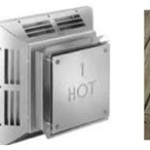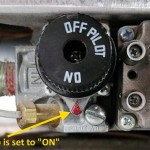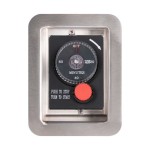Propane Fireplace Outdoor Considerations: A Comprehensive Guide
Outdoor propane fireplaces offer a convenient and aesthetically pleasing way to extend the usability of outdoor spaces. They provide warmth, ambiance, and a focal point for gatherings, transforming patios, decks, and yards into comfortable living areas even during cooler seasons. Selecting and installing a propane fireplace, however, requires careful consideration of various factors, including safety, regulations, and aesthetic preferences.
This article provides a comprehensive guide to understanding outdoor propane fireplaces, covering important aspects such as fuel source considerations, safety precautions, installation guidelines, maintenance requirements, and design choices. It aims to equip homeowners with the knowledge necessary to make informed decisions when incorporating a propane fireplace into their outdoor living space.
Understanding Propane as a Fuel Source for Outdoor Fireplaces
Propane, also known as liquefied petroleum gas (LPG), is a hydrocarbon gas that is stored under pressure as a liquid. It is a readily available and relatively clean-burning fuel source compared to wood or other fossil fuels. Its versatility makes it suitable for powering various outdoor appliances, including grills, heaters, and, of course, fireplaces.
One key advantage of propane is its portability. Propane tanks, available in various sizes, can be easily transported and connected to the fireplace, eliminating the need for a permanent gas line. This flexibility allows for greater freedom in fireplace placement and design. Alternatively, for homeowners seeking a more permanent solution, a direct propane line can be installed, connecting the fireplace to a larger propane tank located elsewhere on the property. This eliminates the need for frequent tank refills and provides a continuous fuel supply.
Propane fireplaces offer a controlled and consistent flame. Unlike wood-burning fireplaces, propane fireplaces allow for precise adjustment of the flame height and heat output, providing greater control over the ambiance and temperature. This feature is particularly useful for creating a comfortable atmosphere for outdoor gatherings, regardless of the weather.
Furthermore, propane burns cleaner than wood, producing significantly less smoke and particulate matter. This contributes to a more pleasant outdoor environment and reduces the potential for air pollution. The cleaner burning characteristics of propane also minimize the need for extensive chimney cleaning and maintenance.
However, it's crucial to recognize the inherent safety requirements associated with propane. Propane is flammable and requires careful handling. Leaks can pose a fire hazard, and improper storage can lead to explosions. Regular inspections of the propane tank, connections, and fireplace components are essential to ensure safe operation. A qualified professional should always be consulted for installation and maintenance to mitigate the risks associated with propane.
Safety First: Essential Precautions for Outdoor Propane Fireplaces
Safety is paramount when operating any propane-fueled appliance, and outdoor fireplaces are no exception. Adhering to safety guidelines is crucial to prevent accidents and ensure the well-being of users and their property.
Firstly, location is critical. The fireplace should be positioned away from flammable materials such as dry leaves, overhanging branches, and wooden structures. A minimum clearance of several feet is recommended, as prescribed by the manufacturer's instructions and local building codes. This clearance minimizes the risk of accidental ignition and prevents damage to surrounding property.
Secondly, regular inspections are essential. Before each use, the propane tank, hoses, and connections should be inspected for any signs of damage or leaks. Soapy water can be used to check for leaks; if bubbles appear when applied to the connections, a leak is present and needs immediate attention. Damaged or worn components should be replaced promptly by a qualified technician.
Thirdly, proper ventilation is crucial. While outdoor fireplaces are designed for open-air use, it is important to ensure adequate ventilation to prevent the buildup of carbon monoxide. Never use a propane fireplace indoors or in enclosed spaces, as this can lead to carbon monoxide poisoning. In partially enclosed areas, such as covered patios, ensure sufficient airflow to prevent the accumulation of harmful gases.
Fourthly, children and pets should be supervised at all times when the fireplace is in operation. The flames and hot surfaces can pose a burn hazard. A safety barrier or fence around the fireplace can help prevent accidental contact.
Fifthly, familiarize oneself with the operation of the fireplace and the propane tank. Know how to turn the gas supply on and off, and understand the emergency shut-off procedures. Keep a fire extinguisher readily available in case of a fire. Regularly review safety guidelines with all family members and guests who may use the fireplace.
Finally, when storing propane tanks, follow all safety regulations. Tanks should be stored upright in a well-ventilated area, away from direct sunlight and sources of heat. Never store propane tanks indoors or in enclosed areas.
Installation and Maintenance: Ensuring Optimal Performance and Longevity
Proper installation and regular maintenance are critical for the safe and efficient operation of an outdoor propane fireplace. While some homeowners may be tempted to undertake the installation themselves, it is strongly recommended to hire a qualified professional to ensure compliance with safety regulations and proper functionality.
The installation process typically involves connecting the fireplace to a propane source, whether it's a portable tank or a direct gas line. The connections must be secure and leak-proof to prevent gas leaks. A professional installer will also ensure that the fireplace is properly vented and that all safety features are functioning correctly.
Before installation, it's vital to verify local building codes and regulations regarding outdoor fireplaces. Some municipalities may have specific requirements for placement, clearances, and permits. Failure to comply with these regulations can result in fines or the need to relocate the fireplace.
Once the fireplace is installed, regular maintenance is essential to ensure its longevity and optimal performance. This includes cleaning the burner assembly, inspecting the gas lines and connections, and checking the ventilation system. Debris such as leaves, dirt, and insects can accumulate in the burner assembly, affecting the flame quality and efficiency. Cleaning the burner regularly can prevent these issues.
The glass or decorative elements of the fireplace may also require periodic cleaning to maintain their appearance. Use a mild detergent and a soft cloth to clean the glass, avoiding abrasive cleaners that could scratch the surface.
Annually, it is advisable to have a qualified technician inspect the fireplace and perform a thorough maintenance check. This includes checking the gas pressure, inspecting the safety valves, and ensuring that all components are functioning correctly. A professional inspection can identify potential problems before they become serious, preventing costly repairs and ensuring safe operation.
In addition to routine maintenance, it's crucial to protect the fireplace from the elements when it's not in use. A cover can protect it from rain, snow, and sun, preventing rust and corrosion. This is particularly important in harsh climates where the fireplace may be exposed to extreme weather conditions.
If any repairs are needed, it's important to use only genuine replacement parts. Using non-original parts can compromise the safety and performance of the fireplace. Consult with a qualified technician to ensure that the correct parts are used and that the repairs are done properly.
By following these installation and maintenance guidelines, homeowners can ensure that their outdoor propane fireplace provides years of enjoyment and safe operation.
Choosing the right style is also important. There are many different styles of propane fireplaces available on the market. These vary from simple portable models to elaborate built-in installations. Carefully consider the available outdoor space, budget, and design preferences when selecting a fireplace. Consider the overall aesthetic of the outdoor space and choose a fireplace that complements the existing design. Factors such as the size, shape, color, and materials of the fireplace should be taken into account.
Finally, consider the heat output of the fireplace. Different models have different heat outputs, measured in British Thermal Units (BTUs). Choose a fireplace with a heat output that is appropriate for the size of the outdoor space and the climate. A fireplace with a higher BTU rating will provide more heat, but it will also consume more propane.

Cal Flame 78 In Stone Veneer And Tile Propane Gas Outdoor Fireplace 22 Frp908 3 Rk The Home Depot

Sedona Outdoor Fireplace Round Propane Natural Gas Fire Table

Cal Flame 78 In Tile And Stucco Propane Gas Outdoor Fireplace 22 Frp909 St The Home Depot

Barton Propane Fire Pit Outdoor Gas Bowl With Lava Rocks Cover Auto Ignition Fireplace 40 000 Btu Dark Grey 27 5 Inch Com

Cal Flame Stone Veneer Gas Outdoor Fireplace Frp908 3 Modern Ions

36 Outdoor Gas Fireplace Electronic Ignition Fine S

Domi Propane Fire Pits Square Table 50 000 Btu Outdoor Gas Pit With Lid And Lava Rock

Real Flame Idledale 40 In W X 16 H Outdoor Mgo Round Propane Fire Pit Gray With Lava Rocks And Protective Cover 840lp Glg The Home Depot

Deko Living 52 Inch 50 000 Btu Brown Portable Wicker Propane Gas Fire

Allen Roth 40000 Btu Black Steel Liquid Propane Outdoor Fireplace At Com








